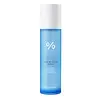What's inside
What's inside
 Key Ingredients
Key Ingredients

 Benefits
Benefits

 Concerns
Concerns

No concerns
 Ingredients Side-by-side
Ingredients Side-by-side

Water
Skin ConditioningGlycerin
HumectantPropanediol
SolventPanthenol
Skin ConditioningXylitylglucoside
HumectantChondrus Crispus Extract
Skin ConditioningGlycosaminoglycans
EmollientSodium Hyaluronate
HumectantAnhydroxylitol
HumectantMalachite Extract
AntioxidantPantolactone
HumectantXylitol
HumectantButylene Glycol
HumectantCarbomer
Emulsion StabilisingGlyceryl Acrylate/Acrylic Acid Copolymer
HumectantPhenoxyethanol
PreservativeEthylhexylglycerin
Skin ConditioningSodium Hydroxide
BufferingCitric Acid
BufferingWater, Glycerin, Propanediol, Panthenol, Xylitylglucoside, Chondrus Crispus Extract, Glycosaminoglycans, Sodium Hyaluronate, Anhydroxylitol, Malachite Extract, Pantolactone, Xylitol, Butylene Glycol, Carbomer, Glyceryl Acrylate/Acrylic Acid Copolymer, Phenoxyethanol, Ethylhexylglycerin, Sodium Hydroxide, Citric Acid
Water
Skin ConditioningGlycerin
HumectantMethylpropanediol
SolventPropanediol
Solvent1,2-Hexanediol
Skin ConditioningNiacinamide
SmoothingGlycereth-26
HumectantPanthenol
Skin ConditioningButylene Glycol
HumectantBetaine
HumectantEthylhexylglycerin
Skin ConditioningGlyceryl Glucoside
HumectantDioscorea Japonica Root Extract
Skin ConditioningGlycosyl Trehalose
Emulsion StabilisingAdenosine
Skin ConditioningXanthan Gum
EmulsifyingHydrogenated Starch Hydrolysate
HumectantRaffinose
Skin ConditioningSodium Hyaluronate
HumectantHydroxypropyltrimonium Hyaluronate
Cellulose Gum
Emulsion StabilisingLecithin
EmollientParfum
MaskingAmaranthus Caudatus Seed Extract
Skin ConditioningArctium Lappa Root Extract
Skin ConditioningFructan
Skin ConditioningPhellinus Linteus Extract
Skin ConditioningUlmus Davidiana Root Extract
Skin ConditioningPolyquaternium-51
Skin ConditioningAcrylates/C10-30 Alkyl Acrylate Crosspolymer
Emulsion StabilisingCentella Asiatica Extract
CleansingOctyldodeceth-16
EmulsifyingTromethamine
BufferingBiosaccharide Gum-1
HumectantTocopherol
AntioxidantHydrolyzed Hyaluronic Acid
HumectantSodium Acetylated Hyaluronate
HumectantHyaluronic Acid
HumectantSodium Hyaluronate Crosspolymer
HumectantWater, Glycerin, Methylpropanediol, Propanediol, 1,2-Hexanediol, Niacinamide, Glycereth-26, Panthenol, Butylene Glycol, Betaine, Ethylhexylglycerin, Glyceryl Glucoside, Dioscorea Japonica Root Extract, Glycosyl Trehalose, Adenosine, Xanthan Gum, Hydrogenated Starch Hydrolysate, Raffinose, Sodium Hyaluronate, Hydroxypropyltrimonium Hyaluronate, Cellulose Gum, Lecithin, Parfum, Amaranthus Caudatus Seed Extract, Arctium Lappa Root Extract, Fructan, Phellinus Linteus Extract, Ulmus Davidiana Root Extract, Polyquaternium-51, Acrylates/C10-30 Alkyl Acrylate Crosspolymer, Centella Asiatica Extract, Octyldodeceth-16, Tromethamine, Biosaccharide Gum-1, Tocopherol, Hydrolyzed Hyaluronic Acid, Sodium Acetylated Hyaluronate, Hyaluronic Acid, Sodium Hyaluronate Crosspolymer
 Reviews
Reviews

Ingredients Explained
These ingredients are found in both products.
Ingredients higher up in an ingredient list are typically present in a larger amount.
Butylene Glycol (or BG) is used within cosmetic products for a few different reasons:
Overall, Butylene Glycol is a safe and well-rounded ingredient that works well with other ingredients.
Though this ingredient works well with most skin types, some people with sensitive skin may experience a reaction such as allergic rashes, closed comedones, or itchiness.
Learn more about Butylene GlycolEthylhexylglycerin (we can't pronounce this either) is commonly used as a preservative and skin softener. It is derived from glyceryl.
You might see Ethylhexylglycerin often paired with other preservatives such as phenoxyethanol. Ethylhexylglycerin has been found to increase the effectiveness of these other preservatives.
Glycerin is already naturally found in your skin. It helps moisturize and protect your skin.
A study from 2016 found glycerin to be more effective as a humectant than AHAs and hyaluronic acid.
As a humectant, it helps the skin stay hydrated by pulling moisture to your skin. The low molecular weight of glycerin allows it to pull moisture into the deeper layers of your skin.
Hydrated skin improves your skin barrier; Your skin barrier helps protect against irritants and bacteria.
Glycerin has also been found to have antimicrobial and antiviral properties. Due to these properties, glycerin is often used in wound and burn treatments.
In cosmetics, glycerin is usually derived from plants such as soybean or palm. However, it can also be sourced from animals, such as tallow or animal fat.
This ingredient is organic, colorless, odorless, and non-toxic.
Glycerin is the name for this ingredient in American English. British English uses Glycerol/Glycerine.
Learn more about GlycerinPanthenol is a common ingredient that helps hydrate and soothe the skin. It is found naturally in our skin and hair.
There are two forms of panthenol: D and L.
D-panthenol is also known as dexpanthenol. Most cosmetics use dexpanthenol or a mixture of D and L-panthenol.
Panthenol is famous due to its ability to go deeper into the skin's layers. Using this ingredient has numerous pros (and no cons):
Like hyaluronic acid, panthenol is a humectant. Humectants are able to bind and hold large amounts of water to keep skin hydrated.
This ingredient works well for wound healing. It works by increasing tissue in the wound and helps close open wounds.
Once oxidized, panthenol converts to pantothenic acid. Panthothenic acid is found in all living cells.
This ingredient is also referred to as pro-vitamin B5.
Learn more about PanthenolPropanediol is an all-star ingredient. It softens, hydrates, and smooths the skin.
It’s often used to:
Propanediol is not likely to cause sensitivity and considered safe to use. It is derived from corn or petroleum with a clear color and no scent.
Learn more about PropanediolSodium Hyaluronate is hyaluronic acid's salt form. It is commonly derived from the sodium salt of hyaluronic acid.
Like hyaluronic acid, it is great at holding water and acts as a humectant. This makes it a great skin hydrating ingredient.
Sodium Hyaluronate is naturally occurring in our bodies and is mostly found in eye fluid and joints.
These are some other common types of Hyaluronic Acid:
Learn more about Sodium HyaluronateWater. It's the most common cosmetic ingredient of all. You'll usually see it at the top of ingredient lists, meaning that it makes up the largest part of the product.
So why is it so popular? Water most often acts as a solvent - this means that it helps dissolve other ingredients into the formulation.
You'll also recognize water as that liquid we all need to stay alive. If you see this, drink a glass of water. Stay hydrated!
Learn more about Water